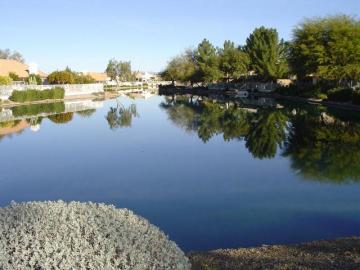 Arizona possesses enough water in Pima, Pinal, and Maricopa counties to support 4.3 million people, says a report from the Morrison Institute for Public Policy at ASU. But to do so, all commercial farming would have to vanish. This could presage yet another chapter in the eternal water wars between city and rural interests. The Institute is not taking sides, but rather is suggesting that while the Sun Corridor won't run out of water, it does face serious challenges.
Arizona possesses enough water in Pima, Pinal, and Maricopa counties to support 4.3 million people, says a report from the Morrison Institute for Public Policy at ASU. But to do so, all commercial farming would have to vanish. This could presage yet another chapter in the eternal water wars between city and rural interests. The Institute is not taking sides, but rather is suggesting that while the Sun Corridor won't run out of water, it does face serious challenges.
Among them is the variability in water supply brought on by climate change, a growing urban population, and agriculture and mining using large amounts of water. In an era of climate change with highly variable weather, using historical averages to estimate potential water supply is increasingly less useful. A drought of just a few years in crucial areas could substantially and negatively impact growing urban populations living in deserts. Plus, as always, agriculture takes the predominant share of water. Statewide in Arizona, agriculture takes an astonishing 70% of the water.
Well then, might say urban dwellers, "Let's get rid of all those pesky farms so we can have a swimming pool in the backyard and water the lawn when we want." Not so fast, the Law of Not So Unintended Consequences will almost certainly bite them like a cranky rattler. Presumably those same city dwellers will still be needing food. If it's not grown in Arizona, it will be grown elsewhere, then shipped in, and will cost more. The loss of revenue, taxes, and jobs to Arizona would of course be severe too.
It's not so easy to balance water usage out then, is it? That's the point of the report, which admits that due to the morass of rules regulating how water can be used, they are probably underestimating the problem. One bright spot is that increasing awareness of the need for water conservation has led to a steady drop in per capita water consumption over the past few decades, and this includes both Phoenix and Tucson. However, Phoenix, with its legacy as a farming town, uses considerably more water per capita than Tucson. Both cities use about the same per capita amount of water indoors. But, Phoenix uses considerably more water for residential outdoor use, something which will certainly become an issue in the future. Xeriscaping is certainly one answer. Extreme cases of drought could lead to what Big Spring, Texas is experiencing now, a drought of historical proportions with no end in sight. Watering lawns and washing cars there has been completely banned until the drought ends. And of course, swimming pools are empty.
The report has no neat answers. It doesn't actually have any answers. Rather it says, Arizona needs to plan now, while looking decades ahead, to determine how to manage its water. Further, whatever decisions it makes will need to be revisited and rethought time and time again.
The report concludes:
"Today there are a host of new challenges on the horizon-particularly the horizon after the mid-2020s. Competing in a global, and increasingly urban, economy will change the competitive position of the Sun Corridor. Climate change may further stress an already stretched water supply. Future variability may outstrip the storage systems built to manage the past. Agriculture may disappear. The return of rapid population growth will likely necessitate dramatic changes in lifestyle, particularly the lifestyle of desert dwellers at the high end of the socioeconomic ladder.
The Sun Corridor exists only because past Arizonans tirelessly worked together to build a vast, complex plumbing system. Using the power of government to do this represented the clearest consensus imaginable about serving the needs of society through collective action. The real question today is whether we still have that shared commitment to this place and its future, and whether we still trust in the power of collective action to meet these new challenges with the same faith and creativity."
